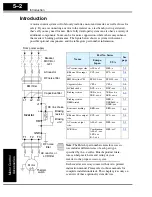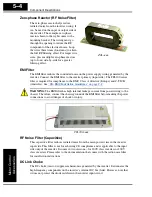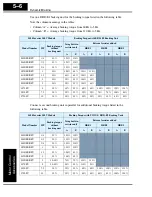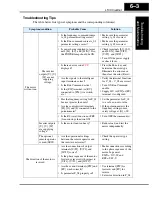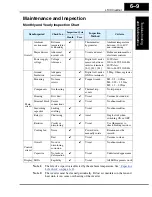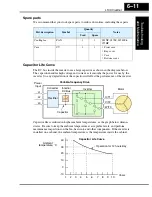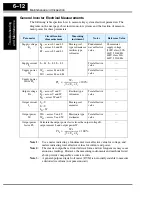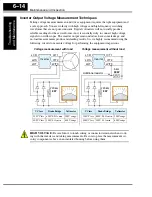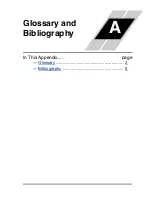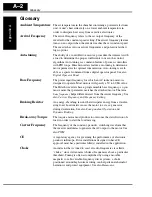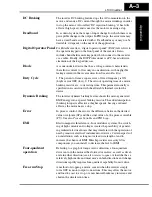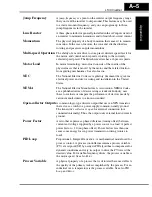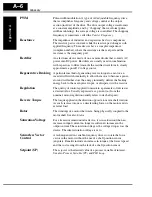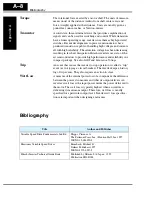
L100 Inverter
T
roub
leshooting
and Maintenance
6–9
Maintenance and Inspection
Monthly and Yearly Inspection Chart
Note 1:
The life of a capacitor is affected by the ambient temperature. See
Note 2:
The inverter must be cleaned periodically. If dust accumulates on the fan and
heat sink, it can cause overheating of the inverter
.
Item Inspected
Check for...
Inspection Cycle
Inspection
Method
Criteria
Month
Year
Overall
Ambient
environment
Extreme
temperatures
& humidity
✔
Thermometer,
hygrometer
Ambient temperature
between -10 to 40°C,
non-condensing
Major devices
Abnormal
noise & vib.
✔
Visual and aural
Stable environment for
electronic controls
Power supply
voltage
Voltage
tolerance
✔
Digital volt meter,
measure between
inverter terminals
[L1], [L2], [L3]
200V class:
200 to 240V 50/60 Hz
400V class:
380 to 460V 50/60 Hz
Main
circuit
Ground
Insulation
Adequate
resistance
✔
Digital volt meter,
GND to terminals
5 Meg. Ohms or greater
Mounting
No loose
screws
✔
Torque wrench
M3: 0.5 – 0.6 Nm
M4: 0.98 – 1.3 Nm
M5: 1.5 – 2.0 Nm
Components
Overheating
✔
Thermal trip
events
No trip events
Housing
Dirt, dust
✔
Visual
Vacuum dust and dirt
Terminal block Secure
connections
✔
Visual
No abnormalities
Smoothing
capacitor
Leaking,
swelling
✔
Visual
No abnormalities
Relay(s)
Chattering
✔
Aural
Single click when
switching ON or OFF
Resistors
Cracks or
discoloring
✔
Visual
Use Ohm meter to
check braking resistors
Cooling fan
Noise
✔
Power down,
manually rotate
Rotation must be
smooth
Dust
✔
Visual
Vacuum to clean
Control
circuit
Overall
No odor,
discoloring,
corrosion
✔
Visual
No abnormalities
Capacitor
No leaks or
deformation
✔
Visual
Undistorted appearance
Display LEDs
Legibility
✔
Visual
All LED segments work

